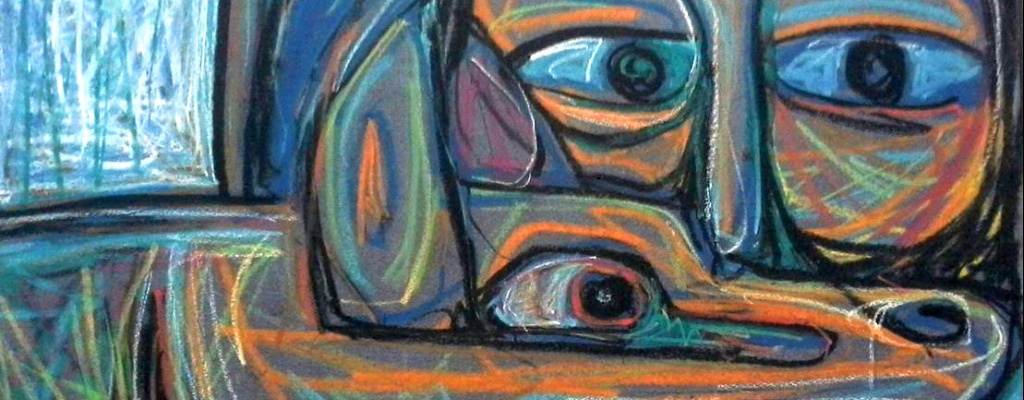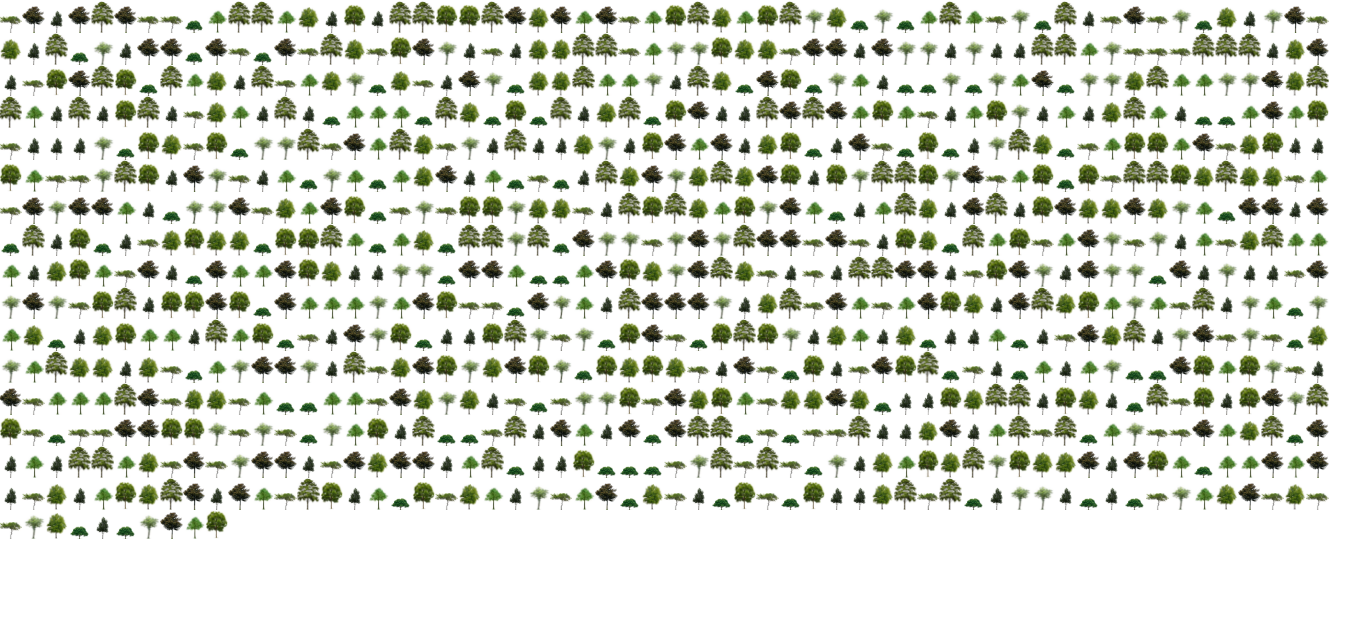[On April 12th, 2018 artist Joana Moll delivered an artist talk for Technocultural Futurisms, a symposium affiliated with the university-wide initiative Illinois 150: The 21st Century University and Research for the Public Good. Below is a response to Moll's artist talk by Asiya Ikhsanova (Comparative and World Literature).] Response to Joana Moll's Artist TalkWritten by Asiya Ikhsanova (Comparative and World Literature) There exists a long tradition of art reflecting on social and political anxieties of its time. Meet Joana Moll, an artist and researcher based in Barcelona and Berlin, whose work critically engages with some of the most contentious issues in today’s world, such as surveillance, online tracking, and digital communication. Although some of Moll’s research concerns U.S. border politics and American corporations, this brilliant and, at the same time, fascinatingly depressing artist talk was Moll's first presentation of her work to a U.S. audience. The talk was co-organized by the Unit for Criticism, Art + Design, and the National Center for Supercomputing Applications (NCSA). Two of Moll's projects,AZ: Move and Get Shot (2011), cleverly titled to evoke parallels between reality and video games, and The Virtual Watchers (ongoing), examine the subject of US/Mexico border surveillance. Despite the similarity in the subject matter, the two projects are strikingly different in their approach. AZ: Move and Get Shot is essentially represented by six cameras placed at the border that are programmed to record any movement and that Moll can access. The Virtual Watchers on the other hand, is a kind of meta-surveillance, with Moll observing those who observe others. This second project was inspired by the effort of the Texas Border Sheriff’s Coalition to engage civilian populations in border surveillance, thus crowd-sourcing national security. In 2007, the Texas authorities created the website “Blue Servo” which provides its visitors access to a network of surveillance cameras and sensors placed at the Texas-Mexico border. Visitors to the website are encouraged view the live streaming video feed from the cameras and report any “suspicious criminal activity” to the sheriff. The website inspired emulation in Britain with the crime surveillance project titled “Internet Eyes,” which did not survive in Britain, but recently made its way to Brazil. Unlike “Internet Eyes”, which had the intention to pay the “watchers,” Blue Servo relies on free labor. In fact, the Texas website presents surveillance almost as entertainment by stressing that the network “feeds live streaming video FREE-OF-CHARGE to the user’s computer.” Driven to learn more about the website visitors, Moll joined the Facebook community of the Blue Servo users, which allowed her to gather material for her project. Presented as a collage of Facebook exchanges, The Virtual Watchers is ultimately a study of the human psyche, and, more precisely, of the effects of intoxication that the illusion of power gained by playing the role of “Big Brother” yields. [caption id="attachment_1804" align="alignnone" width="1024"] Samir Rafi, Untitled, year n.a., pastel, 50 x 70'' via Picasso Art Gallery, Egypt.[/caption] In Algorithms We Trust Moll’s media art goes beyond being simply politically conscious. It is also keenly conscious of its own modes of production and operation, that is, of its dependence on technology and the ecological impact of those technologies. In search for a new aesthetics that would reflect the changes in today’s world, Moll’s media art both utilizes algorithms and exposes the questionable effects of our reliance on them. Initially introduced to facilitate making small decisions, algorithms eliminate the necessity for human intervention in many areas of today’s life. Yet delegating minute work to algorithms requires, as a payoff, that we give them agency, which ultimately allows them to affect important decisions. Moll’s project titled Algorithms Allowed demonstrates that algorithms are not only allowed, but are most welcome anywhere, regardless of political borders and economic considerations. It focuses, specifically, on the websites of the countries embargoed by the U.S. government to demonstrate that certain products and features (especially those offered for free, like Google Fonts) cross political borders. William Gibson’s 1996 vision of the web as a “post-geopolitical meta-country” is certainly true today. What Moll is trying to demonstrate is how pervasive and at times stubbornly stupid--despite their intelligence--algorithms are. Her experience with trying to sell Google trackers found on a North Korean website, on EBay as a txt. file, which resulted in a failure due to the “product’s” lack of compliance with the U.S. policy, inspired Moll to reflect, through media art, on the idea of “algorithmic governance." [caption id="attachment_1805" align="aligncenter" width="1351"]
Samir Rafi, Untitled, year n.a., pastel, 50 x 70'' via Picasso Art Gallery, Egypt.[/caption] In Algorithms We Trust Moll’s media art goes beyond being simply politically conscious. It is also keenly conscious of its own modes of production and operation, that is, of its dependence on technology and the ecological impact of those technologies. In search for a new aesthetics that would reflect the changes in today’s world, Moll’s media art both utilizes algorithms and exposes the questionable effects of our reliance on them. Initially introduced to facilitate making small decisions, algorithms eliminate the necessity for human intervention in many areas of today’s life. Yet delegating minute work to algorithms requires, as a payoff, that we give them agency, which ultimately allows them to affect important decisions. Moll’s project titled Algorithms Allowed demonstrates that algorithms are not only allowed, but are most welcome anywhere, regardless of political borders and economic considerations. It focuses, specifically, on the websites of the countries embargoed by the U.S. government to demonstrate that certain products and features (especially those offered for free, like Google Fonts) cross political borders. William Gibson’s 1996 vision of the web as a “post-geopolitical meta-country” is certainly true today. What Moll is trying to demonstrate is how pervasive and at times stubbornly stupid--despite their intelligence--algorithms are. Her experience with trying to sell Google trackers found on a North Korean website, on EBay as a txt. file, which resulted in a failure due to the “product’s” lack of compliance with the U.S. policy, inspired Moll to reflect, through media art, on the idea of “algorithmic governance." [caption id="attachment_1805" align="aligncenter" width="1351"] Screenshot of DEFOOOOOOOOOOOOOOOOOOOOOREST, a net-based piece by Joana Moll which depicts the amount of trees needed to absorb the amount of CO2 generated by the global visits to google.com every second.[/caption] The Costs of Googling The last project I will mention is concerned with the environmental costs of technological progress. TitledDEFOOOOOOOOOOOOOOOOOOOOOREST, the work reflects on the amount of CO2 emissions generated from the global use of Google every second. We are addicted to Google. With the average of 52,000 visits per second, the use of Google generates 500kg of CO2 every second, which, according to Moll’s estimation, would require 23 trees per second to absorb the emission. To help visualize the issue, Moll has created a web page that generates the image of 23 trees per second needed to compensate for the global use of the search engine. Conscious of the irony of both ostensibly “solving” the problem of CO2 emissions and contributing to it, Moll’s DEFOOOOOOOOOOOOOOOOOOOOOREST is certainly successful in reframing and defamiliarizing the issue of ecological impact of technology. This and similar projects create new (media) space for reflecting on the ecological costs of the big data, as well as a new aesthetic approach to representing them. Most importantly, they prevent us from forgetting about environmental issues and, one can only hope, inspire action.
Screenshot of DEFOOOOOOOOOOOOOOOOOOOOOREST, a net-based piece by Joana Moll which depicts the amount of trees needed to absorb the amount of CO2 generated by the global visits to google.com every second.[/caption] The Costs of Googling The last project I will mention is concerned with the environmental costs of technological progress. TitledDEFOOOOOOOOOOOOOOOOOOOOOREST, the work reflects on the amount of CO2 emissions generated from the global use of Google every second. We are addicted to Google. With the average of 52,000 visits per second, the use of Google generates 500kg of CO2 every second, which, according to Moll’s estimation, would require 23 trees per second to absorb the emission. To help visualize the issue, Moll has created a web page that generates the image of 23 trees per second needed to compensate for the global use of the search engine. Conscious of the irony of both ostensibly “solving” the problem of CO2 emissions and contributing to it, Moll’s DEFOOOOOOOOOOOOOOOOOOOOOREST is certainly successful in reframing and defamiliarizing the issue of ecological impact of technology. This and similar projects create new (media) space for reflecting on the ecological costs of the big data, as well as a new aesthetic approach to representing them. Most importantly, they prevent us from forgetting about environmental issues and, one can only hope, inspire action.